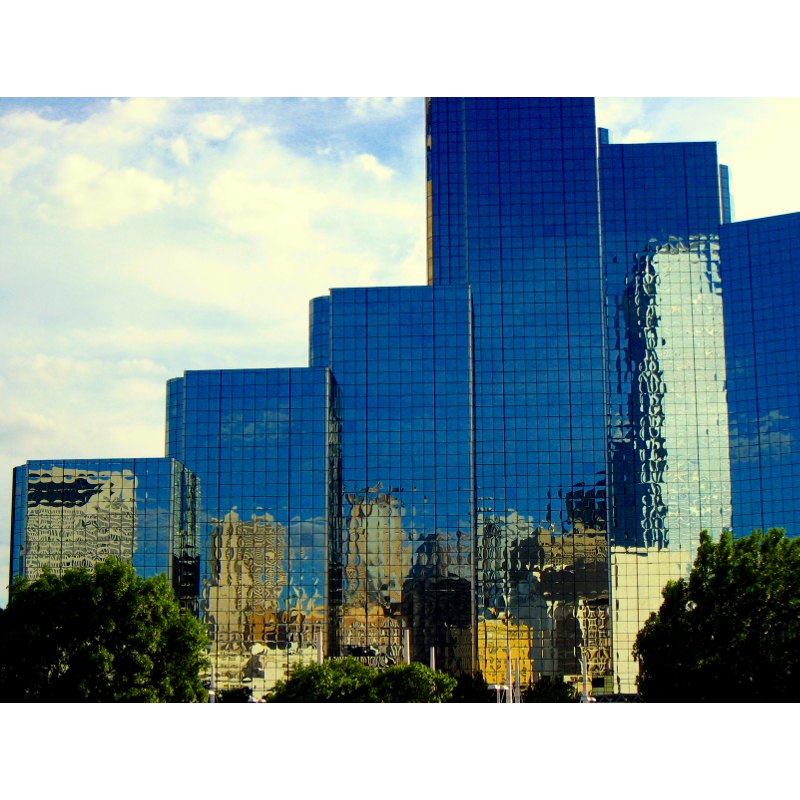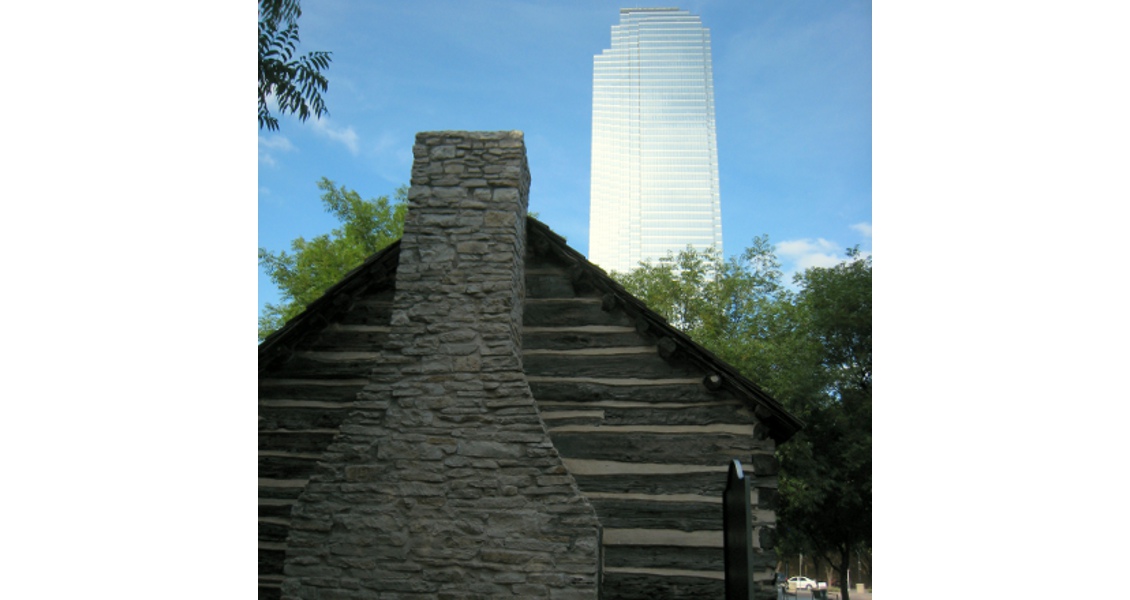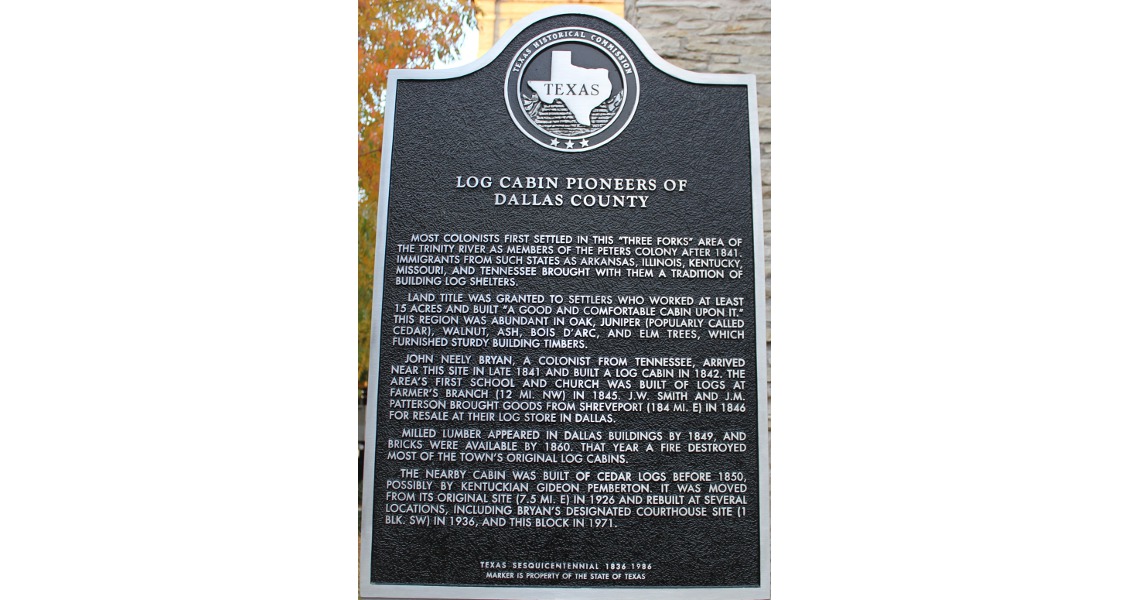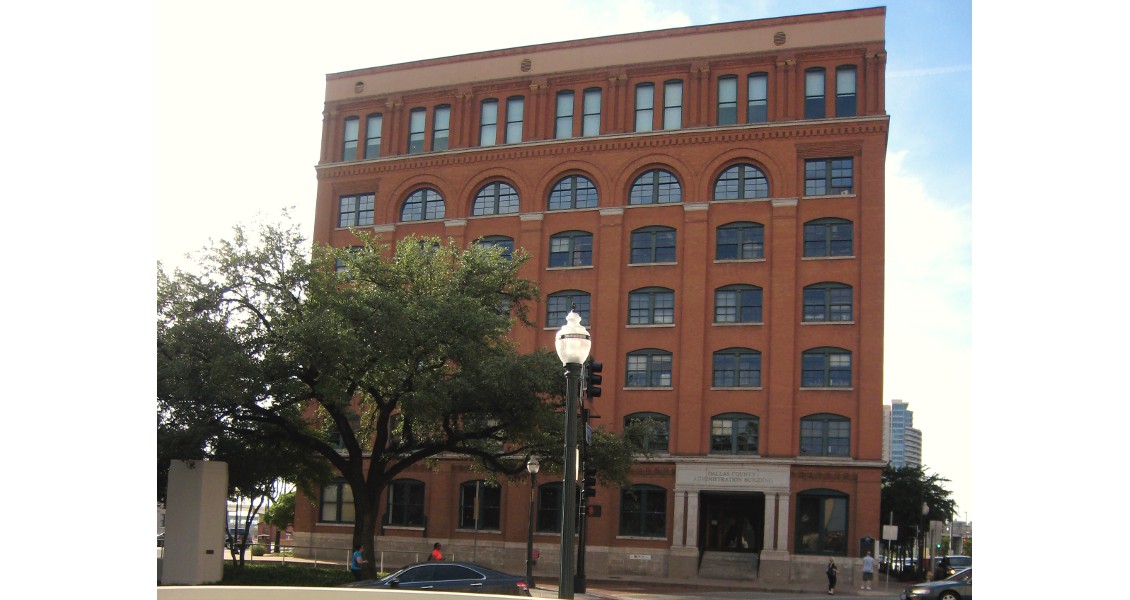In 1839, John Neely Bryan, a Tennessee lawyer looking for a place to create a trading post, wandered into north Texas. He found the area to be a perfect setting for his purposes: plenty of raw land, Native Americans for commerce and, most of all, a river. Returning in 1841, he claimed 640 acres (2.6 km2) and sketched out a town. Incorporated as a city in 1856, Dallas started out like many other western settlements during the early to mid-1800s – just another small frontier town. It was not until it attracted both the major north-south and east-west railroad routes, that Dallas became a viable commercial center. The city remains a transportation hub supporting the giant Dallas/Fort Worth International Airport and is crossed by four major interstate highways.
By the turn of the century, Dallas was the leading market center for the entire south-western US. Pharmaceuticals, jewelry, liquor, cotton, grain, buffalo and cattle formed the bulk of the trade. It became the world’s largest inland cotton market and led the world in the manufacture of saddlery and cotton gin machinery. The city attracted banking, insurance, and high-end shopping centers such as Neiman Marcus, which opened in the downtown area in 1907. The Federal Reserve Bank was located there in 1914 and Ford opened an auto assembly plant, adding to the area’s rapid growth.
Oil-Fueled Growth
While significant hydrocarbon discoveries were being made across most of the state, early exploration in East Texas had been largely unsuccessful through early 1930. The area’s only field was discovered near the town of Van in the Woodbine sand in 1929. Other tests of the Woodbine indicated commercial production was unlikely in this part of the state, but this did not deter two promoters from drilling the Daisy Bradford No. 3. On October 3, 1930, the well discovered oil in the Woodbine sand. It took about a year to establish the boundaries of the supergiant East Texas oil field, which extended into five counties east of Dallas and was the largest oil field ever discovered to that date.
The Great Depression hit at about the same time and Dallas would have been as badly affected as any city across the country had it not been for this important oil discovery. Nathan Adams of the First National Bank in Dallas was one of the first to loan money to oil companies using reserves in the ground for collateral. So, even without a working oil well, Dallas became a financial center for the oil industry, attracting more oil and service companies to the area. The East Texas Refining and the Central Refining companies were established in Dallas to process a bulk of the production from the East Texas field.
Diversifying Economy
 The modern downtown skyline of Dallas is seen reflecting off the Hyatt Regency from Dealey Plaza. The iconic 171m-tall Reunion Tower (not pictured) is to the left of this. The tower and the Hyatt Regency at Reunion were completed in 1978 as part of an urban redevelopment project which included the historic Union Station serving the city’s railway system. (Source: Thomas Smith)Still, Dallas did not grow during that decade; it would take WWII to establish the city as a major manufacturing hub. Immediately after the war, Dallas began growing in leaps and bounds with five new businesses opening each day and thirteen manufacturing plants every month. With companies like LTV Corporation and Texas Instruments, Dallas became one of the nation’s largest technology centers. The 1974 completion of Dallas-Fort Worth International Airport attracted even more corporate headquarters to Dallas, further cementing the city’s standing as a diversified financial and business center.
The modern downtown skyline of Dallas is seen reflecting off the Hyatt Regency from Dealey Plaza. The iconic 171m-tall Reunion Tower (not pictured) is to the left of this. The tower and the Hyatt Regency at Reunion were completed in 1978 as part of an urban redevelopment project which included the historic Union Station serving the city’s railway system. (Source: Thomas Smith)Still, Dallas did not grow during that decade; it would take WWII to establish the city as a major manufacturing hub. Immediately after the war, Dallas began growing in leaps and bounds with five new businesses opening each day and thirteen manufacturing plants every month. With companies like LTV Corporation and Texas Instruments, Dallas became one of the nation’s largest technology centers. The 1974 completion of Dallas-Fort Worth International Airport attracted even more corporate headquarters to Dallas, further cementing the city’s standing as a diversified financial and business center.
While most cities reeled from the late 1970s to early 1980s real estate and banking bust and an economic recession, Dallas continued to grow very rapidly. Many new businesses moved in to take advantage of the very low real estate prices, coupled with the ‘Sun Belt’ effect, where many northern US factories closed and moved their businesses south along with the jobs. Dallas ranked first in the country in new or expanded corporate facilities, including a considerable tourist and convention industry.
Since the 1990s immigration has been and is still an important driving force for the Texas and Dallas economy. “The Texas economic success story wouldn’t be possible without migration from abroad and from other US states,” said Pia Orrenius, a senior economist for the Dallas Federal Reserve Bank in 2013. Over 60% of these immigrants are from Mexico. This immigration also made Dallas much more youthful, increasing the percentage of large families with children. During this period, the city’s population increased 18%, but its suburbs grew at an amazing 40%. Now, the Dallas-Fort Worth Metropolitan Area is the nation’s 4th most populous at 6.8 million, although Dallas remains the primary business hub with most of the area’s jobs remaining in the central city.
Recovering from Tragedy
Like many frontier towns, Dallas has had its share of catastrophes, fires, floods, and infamous citizens like bank robbers Bonnie Parker and Clyde Barrow. However, none had the effect on the city as did the November 22, 1963 assassination of President John F. Kennedy. Most of us living at that time can remember where we were when the news was announced. Harsh world attention came to Dallas, dubbed ‘the city of hate’. For more than 15 years, the city did little to acknowledge the event; visitors found only an abandoned warehouse from where Lee Harvey Oswald waited in ambush. Dallas kept growing but the wounds were still evident.
Today, Dealey Plaza, adjacent to where the President was shot, is one of America’s most popular tourist destinations with more people visiting there than any other place in the city. The Texas School Book Depository, from where those fatal shots were fired, now houses The Sixth Floor Museum that documents this tragic story. It took forward-looking city planners in the 1970s to keep the warehouse from being demolished. To save the building, the city purchased it in 1977 for additional county offices. Still, in spite of a growing visitor interest in the area, a place to explain that tragic time in the city’s history was a difficult sell. It was not until President’s Day in 1989 that the museum opened at a site that many wanted destroyed. Dallas had finally embraced its history and stepped out of the dark shadows of that tragic day in November, 1963, a proud and vibrant metropolis.








